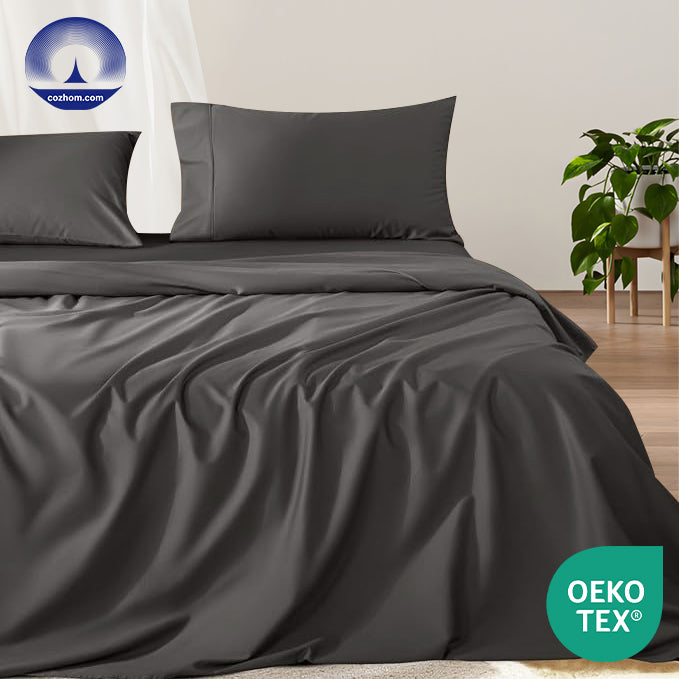
Menopause Night Sweats & Sleep Loss — How COZHOM Bedding Cuts Nighttime Disruption
Chia sẻ
Night sweats and hot flashes are among the top complaints during menopause, and they frequently fragment sleep. Research estimates that about 40–69% of women experience sleep disturbance across the menopause transition, with many attributing awakenings to being too hot. Bedding that actively manages heat and moisture can therefore produce clinically meaningful sleep improvements. :contentReference[oaicite:11]{index=11}
Why surface temperature and evaporation matter
Physiologically, falling asleep requires core body temperature to drop. Hot flashes abruptly raise skin and core temperature, interrupting this process. Cooling surfaces and fabrics that accelerate evaporative cooling help the body re-enter deep sleep. Laboratory and real-world trials of temperature-regulating sleep systems show measurable improvements: reduced hot flash frequency, reduced interference with sleep, and increased sleep duration by roughly 20–30 minutes on average in reported pilots. :contentReference[oaicite:12]{index=12}
COZHOM cooling system: engineered for menopausal needs
COZHOM’s bedding integrates:
- High-efficiency moisture-wicking fibers that move sweat away from skin,
- Phase-aware fabric structures that enable faster heat dissipation,
- Optional temperature-modulating mattress liners for severe VMS nights.
Evidence snapshot: what women report after using cooling bedding
In recent pilots, users reported sharp reductions in sleep disruption due to feeling too hot (for example, reductions from >80% reporting “sleep disrupted by heat” down to <40% after intervention in some samples) and gains in total sleep time. That level of improvement—tens of minutes per night—compounds to meaningful week/month improvements in mood and daytime function. :contentReference[oaicite:13]{index=13}
Combining bedding with behavioral therapies
While cooling bedding offers immediate microclimate benefits, durable insomnia treatment often includes CBT-I and sleep hygiene. COZHOM’s approach is complementary: reduce nocturnal triggers (hot flashes) at the surface while patients pursue CBT-I or medical treatments for durable remission. Studies show CBT-I is highly effective for midlife women and can be used alongside environmental changes. :contentReference[oaicite:14]{index=14}
How to trial COZHOM if you have night sweats
- Start with a sample cooling sheet and test for 7–14 nights.
- Track number of awakenings and whether awakenings are heat-related.
- Consider adding COZHOM’s deep-pressure layer during high-anxiety nights.
Bottom line
For menopausal women, addressing night sweats at the sleep-surface level is a fast, noninvasive strategy to reduce awakenings. COZHOM bedding is engineered for this task, combining proven cooling strategies with user-centered design to reduce VMS-related sleep fragmentation. If hot flashes wake you often, COZHOM’s cooling options should be among the first nonpharmacological measures you try.